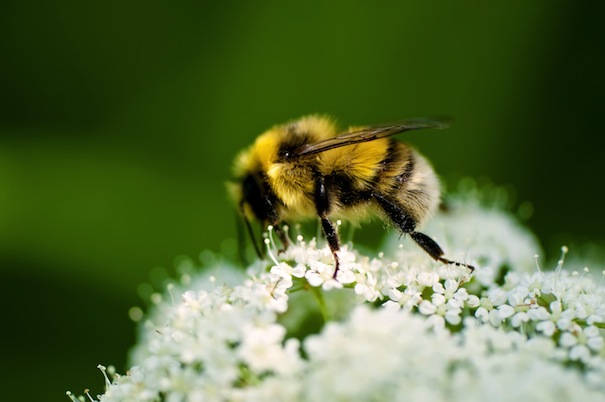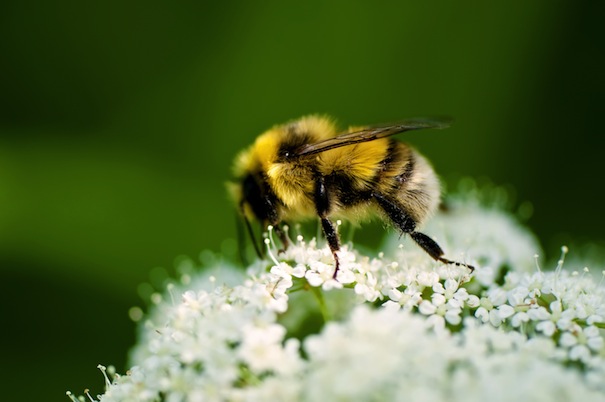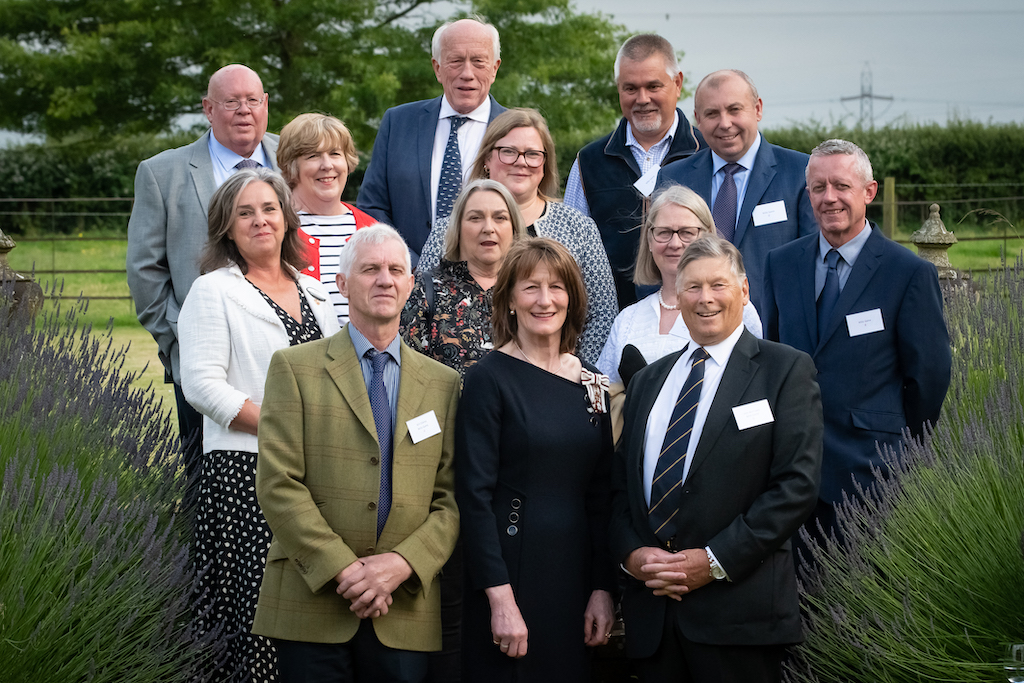I recently observed a pretty special moment in my back garden. Over the winter I had installed a red mason bee box on the wall of my shed. The box consists of paper tubes stuffed tightly into a wooden box. I had been watching the box with anticipation but it was not until the first week of May that I finally saw some activity. It was around 8.30am and the sun was just starting to warm up. Looking closely, I could see a small face nibbling at the clay ‘plug’ that sealed the end of one of the tubes. This was a young red mason bee hatching. The insect broke away the mud and squeezed through the gap. He climbed onto the front of the box and started to preen, feeling the warmth of the sunlight for the very first time.
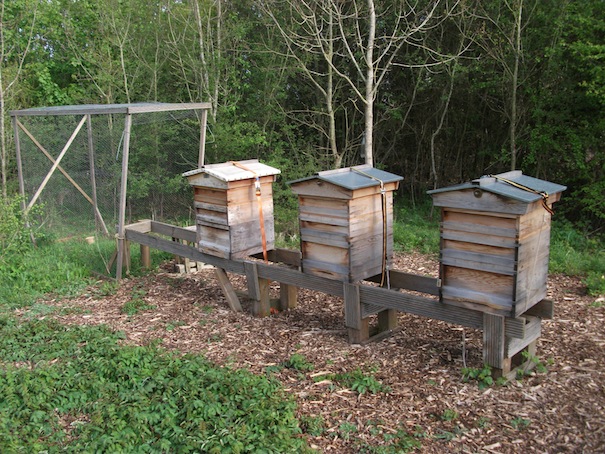 At this time of year the red mason bees in my garden are busy mating. The females then seek out a suitable hole in which to lay her eggs. This can be a beetle hole in a dead tree, a cavity in a brick wall or a paper tube in my bee box. The female crawls into the hole and lays her first egg at the back. She adds a mixture of pollen and nectar and seals the whole lot in a compartment by building a clay ‘bund’. She repeats this exercise until the hole is full of a row of 6-10 nest compartments. The eggs hatch into larvae and, safely within their cell, feed on the pollen and nectar. After moulting 4 or 5 times the larva spins a cocoon and pupates. The new adults form in September but remain in the cocoon until the spring sunshine returns and their lifecycle starts once again. They are beautiful insects, covered in ginger hair, and are extremely docile. I regularly pick them up and have never been stung.
At this time of year the red mason bees in my garden are busy mating. The females then seek out a suitable hole in which to lay her eggs. This can be a beetle hole in a dead tree, a cavity in a brick wall or a paper tube in my bee box. The female crawls into the hole and lays her first egg at the back. She adds a mixture of pollen and nectar and seals the whole lot in a compartment by building a clay ‘bund’. She repeats this exercise until the hole is full of a row of 6-10 nest compartments. The eggs hatch into larvae and, safely within their cell, feed on the pollen and nectar. After moulting 4 or 5 times the larva spins a cocoon and pupates. The new adults form in September but remain in the cocoon until the spring sunshine returns and their lifecycle starts once again. They are beautiful insects, covered in ginger hair, and are extremely docile. I regularly pick them up and have never been stung.
There are around 250 species of bee in the UK. The majority of these are solitary bees such as the red mason bee that nest individually. We also have 24 species of bumblebee and 1 species of honeybee that are classed as social bees (i.e. they nest communally).
The drone of a bumblebee is one of the quintessential sounds of the summer. Their buzz is made by vibrating muscles. These muscles also serve to warm up the body on cooler days. This enables bumblebees to fly on days when it is too cold for other types of bee. The vibrating muscles of a bumblebee also enable the insect to do something called ‘buzz pollination’. On certain species of flower, pollen is more firmly attached to the anthers. Bumblebees will grab onto the flower and vibrate their flight muscles rapidly. This dislodges the pollen and enables more efficient pollination. Different species of bumblebee have different length tongues. The species with longer tongues love deep flowers like foxgloves that will soon be in flower around the edges of woodlands.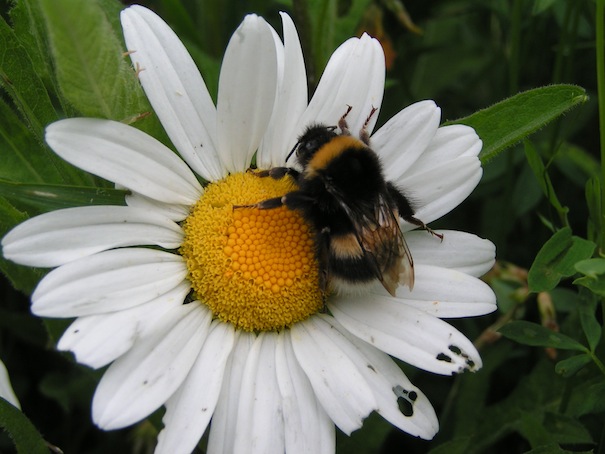
The honey bee is a native of south Asia but is well established in the UK. Honey bees have pollen baskets on their back legs (formed from stiff hairs). Some flowers, when looked at under a UV light have nectar guides. These are patterns that direct bees and other insects to the nectar source in the flower. Honey bees have evolved communication techniques such as the waggle dance to indicate to other members of the colony where a good source of nectar is located.
Walking around Severn Valley Country Park at the moment, the sweet smell of blossom hangs in the air. The wild cherry and crab apple are in flower with their delicate pink and white flowers. Red mason bees have been shown to be very important in pollinating fruit trees and ensuring a good crop of fruit. It has been estimated that one third of all the foods that we eat would not be available were it not for bee pollination.
Bees have been in the news recently because of an EU vote to suspend the use of three types of neonicotinoid. These are chemicals that are sprayed onto some flowering crops to kill pests. The chemicals target the nervous system of the pests but evidence suggests that they can also cause mortality amongst bees that feed on the flowers.
The Gaia Hypothesis was postulated by a scientist called James Lovelock. The theory is that our planet can be considered as one giant organism. All living organisms and their non-living surroundings interact to create the conditions necessary for the survival of the planet. As vital pollinators, bees play a disproportionately large role in this global system. If bee populations continue to decline, the very future of ‘Mother Earth’ could be threatened.
Do one thing for wildlife this month:
By building a solitary bee nesting box for your garden you could do your bit for bee conservation whilst also ensuring pollination of your garden plants. Firstly build a wooden box that is open at the front and has some sort of waterproof roof. Next make some paper tubes around 6 inches long. These can be rolled around a pencil and sealed with a bit of PVA glue. One end needs to be closed. Place the tubes into the box along with some pieces of bamboo cane to give a range of different hole sizes. The finished box needs to be placed in a warm position, facing south. It is possible to purchase red mason bee cocoons to populate your box. Alternatively, simply wait for the bees to find you!
For more information, please see: http://solitarybee.com/blog/
– Edward Andrews MSc.

